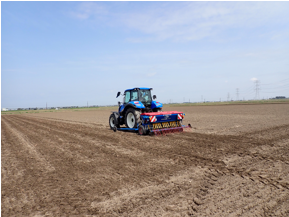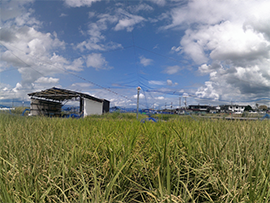"Dry Direct Seeding Cultivation using Plowing and Compaction" developed by NARO is adopted mainly in the Pacific side of Japan as a labor-saving and low-cost paddy rice cultivation technology that responds to the rapid expansion of management scale, such as the accumulation of paddy fields in large-scale farming corporations due to the aging of farmers and lack of successors. As compared to conventional cultivation, omission of puddling is one of the characteristics in this technology. Therefore, it is suitable to grow upland crops and forage crops as subsequent crops, and so various paddy utilizations such as paddy crop rotation and farming and livestock cooperation are expected. The Technology Adaptation Research Team (Joetsu) aims to expand its use in the Hokuriku region by adapting the technology to the snowy areas along the Sea of Japan with characteristics of wet weather and soil.

We conducted a rice ratooning field experiment for the good-tasting and high-yielding variety "Niji-no-kirameki" at an experimental field in Chikugo, Fukuoka, Japan (Kyushu Okinawa Agricultural Research Center, NARO). By transplanting seedlings early (mid-April) and harvesting the first crop at a high height (40 cm, usually 10 cm) from the ground, the regrowth is promoted through an increase in starch and sugar accumulated in the stubbles, and a high yield of approximately 1 t/10a can be obtained in total for the first and second crops. Rice ratooning using good-tasting and high-yield varieties is expected to be a technology that can reduce production costs per product by taking advantage of global warming, and is suitable for the production of export rice and commercial rice, which require price competitiveness. The Technology Adaptation Research Team (Tsukuba) will tune the technology to suit the conditions in each area of western region of the Kanto, with the aim of expanding its use.





